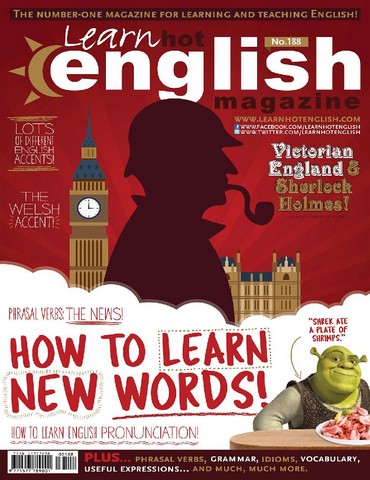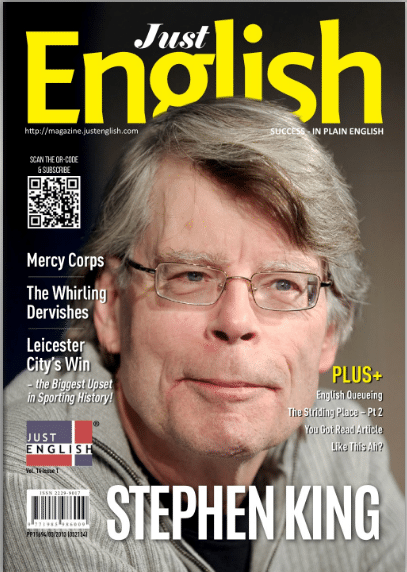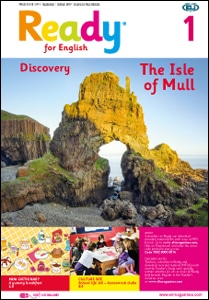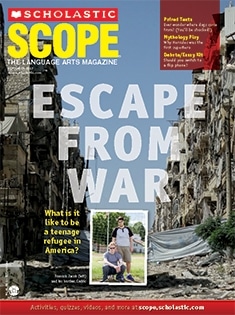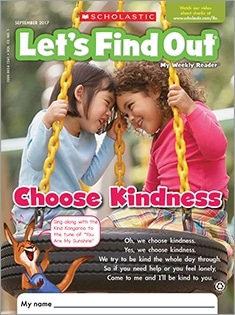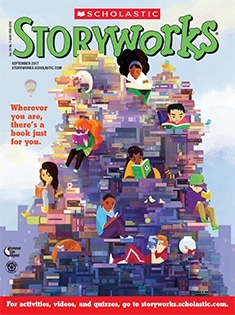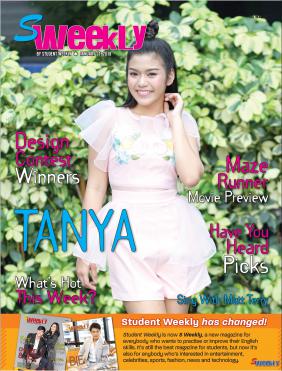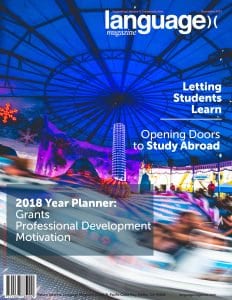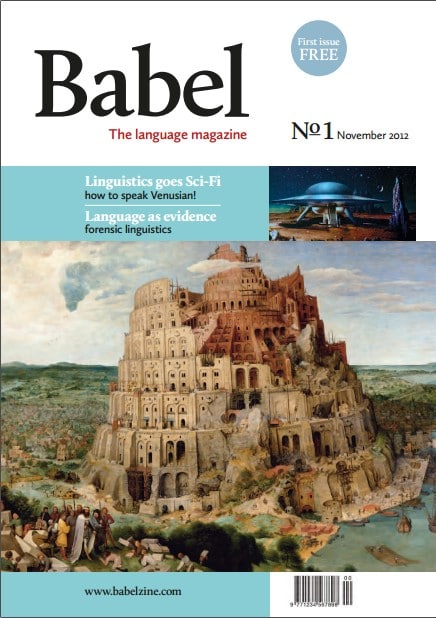Английский от Светика
вторник, 9 октября 2018 г.
Журналы для изучения английского
https://www.fluentu.com/blog/english/learn-english-magazine-2/


14 Digital and Print Magazines Made for English Learning
You know what’s sad?
The fact that we think magazines are all about gossip and celebrity photos.
It doesn’t have to be that way, though.
Take it from Maya Angelou. She said, “In a magazine, one can get—from cover to cover—15 to 20 different ideas about life and how to live it.”
Magazine mogul Hugh Hefner said, “I think that it is the most personal form of journalism. And I think that a magazine is an old friend.”
Magazines can educate you and help you explore new perspectives. They can also be your companions in your English learning journey. Most importantly, they can still be entertaining while they do all of this.
You may’ve already discovered authentic English magazines for reading practice. In this post, we’ll specifically cover magazines that are made for learners like you. These English learning magazines are full of practical language tips, useful activities and, of course, great articles in English.
Ready to turn the page?
Download: This blog post is available as a convenient and portable PDF that you can take anywhere. Click here to get a copy. (Download)
How to Use Magazines to Maximize Your English Learning
- Know your goals: Are you learning English to study abroad? Or are you learning English to expand your business? Choose English magazines that are relevant to your goals. That way, you’ll learn vocabulary that matters most to you.
- Scan the whole magazine first: Before reading any article, first go to the index (the list of articles and their page numbers, usually found at the beginning of the magazine). Look for titles that match your interests.
The scanning process also helps you structure the information more clearly, since you already know the main theme and topics of the articles and how they relate to one another.
- Start with the shortest pieces: Once you’ve selected all the relevant articles, start with the shortest one. Very often, ambitious learners pick a lengthy piece about some difficult topic, and quit midway because of mental exhaustion.
Finishing an article boosts your learning motivation. So start with an article that you can finish comfortably so you don’t run out of steam.
- Time yourself: Record how much time you took to read each article. Also note the length of the article you finished. After finishing a session, compare the amount of time between sessions to see if you’re improving or not.
If your speed is slowing down or isn’t fast enough, try to use different, more efficient reading techniques.
- Cut out the difficult words and play fill-in-the-blank: This is the best way to test your memory immediately after reading an article. Just circle the words that you find difficult while reading and cut them out after you finish. Then try to put them back in the right places based on their meaning and context.
- Diversify your reading practice with FluentU: Many English learners avoid reading practice because it can get overwhelming and a bit lonely. FluentU can help you apply your new reading skills in a different context, so you stay focused.
On FluentU, you’ll get authentic English videos like movie trailers, YouTube clips, inspiring talks and more. Each video comes with interactive captions. Look for words you’ve already seen in English magazines. Click any word you don’t recognize for an instant definition. Like many of the magazines below, there are also exercises to help you memorize better.
FluentU is a great tool to keep you entertained while improving your reading skills. You might even reward yourself with a FluentU video after finishing a magazine article. Plus, you can take it anywhere along with your magazines thanks to the FluentU mobile app.
- Start conversations in social media after reading: Most articles are about popular or important topics that are relevant to other people. After finishing an article, you can share your opinion about the topic by posting a status on Facebook or Tweeting about it.
14 Fantastic Print and Online Magazines for English Learners
Print Magazines for English Language Learners
Yes
This magazine is written for adult English learners. Its aim is to make English learning pleasurable, not plain or boring. As it says on the website, Yes presents articles that are “written by adults for adults.”
The magazine generally has two types of articles. There are “general interest” articles that talk about an interesting topic—such as the history of English language dominance in the world. The editors usually print articles about culture, art, history and technology. The second type of articles help you learn grammar.
Yes uses a teaching technique where they print footnotes to explain difficult passages in an article. Footnotes are additional chunks of information that are printed on the bottom of the page, separate from the actual article. They usually provide extra content so the reader can better understand the main text. But reading these notes aren’t compulsory.
Yes doesn’t translate any passage to other languages, so it’s best for intermediate to advanced learners. Reading footnotes might also be too confusing for beginners.
Hot English Magazine
This magazine is more directly about English learning. It focuses on idioms, grammar and conversation tips.
Every issue has 500 idioms that you can use in your daily life. It also gives you topics for starting a conversation, along with the latest news from the English world, so you don’t feel clueless when talking with natives.
This magazine is ideal for learners who need to learn English for work or exams, but it also caters to learners who need English for other reasons. Since it starts with fundamentals such as grammar and vocabulary, this magazine is good for beginners who need to build up the basics.
The practical tips it provides help learners quickly apply their knowledge to real life and improve their skills really fast.
Just English
This is a magazine published by a Malaysian company. It has two versions: Just English Explorer is for middle school, intermediate learners, while Just English is for teenagers and adults.
Every article in Just English Explorer is given a rating that tells you about the reading levelyou need to understand the text. This magazine is supposed to be used in classrooms but it can also be used for self-learning.
Just English Magazine covers news, personal accounts, sports, historical facts and short stories. It also provides tips for succeeding in English exams. This version focuses more on skills and has some articles that explicitly deal with grammar and vocabulary.
Overall, this is good for reading practice as all articles are graded and you can quickly select the pieces that are relevant to you.
Eli Language Magazines
Eli has a whole bunch of magazines made for kids and young adult students at different levels of English learning.
Ready for English is a magazine for absolute beginners and has many pictures, games and puzzles to aid learning and make it more fun. Teen is their magazine with the highest difficulty level.
Every magazine has some short articles for reading practice and games such as vocabulary recall along with comic strips. They also focus on the cultural aspects of English speaking, which is really beneficial for people who are just starting out.
Scholastic Scope
This magazine by the well known publisher “Scholastic” is for intermediate language learners. It focuses on both skill building and reading practice. Unlike others, this magazine also aims to build readers’ writing skills and their ability to create arguments in a debate.
Each issue has informational articles and short fiction stories. It also uses other visual aids such as infographics, which are cartoons and charts used to represent information. Along with the reading material, they have tasks that readers are supposed to do after finishing an article.
Scholastic Scope also provides essay templates (patterns that serve as guides), which can help learners understand how to structure their arguments. They have a regular column (a series of articles on a certain topic or by a certain author that recur in every issue) for grammar tips.
Let’s Find Out
This is another Scholastic magazine meant for beginners and children. It focuses on building the absolute basic skills and this is ideal for learners who are just starting out. It features various activities for English learning. It also has basic and short articles about science and social studies, along with narrative texts that can serve as quick reading practice.
Since this is for absolute beginners, the magazine uses a lot of pictures so that the learners can make associations between the images and the words.
Storyworks
This magazine features paired texts, which are different articles about similar topics. Paired texts help readers to connect ideas and learn concepts and terms that are related to one another.
Since this is also a Scholastic offering, it has learning activities and tasks similar to Scholastic Scope and Let’s Find Out. In each issue, you’ll find articles about science, culture, history and debates for beginner to intermediate level learners. It also features poetry, fiction, mythology and other kinds of literature.
This magazine is best used alongside its online version, where you’ll also find videos and activity sheets.
S Weekly
This is a weekly magazine published by a Thai company. Its target audience is teenagers and intermediate English learners. Apart from the education section in the magazine, it also prints articles related to entertainment, current affairs and cool events, as well as letters by readers.
This magazine is unique because it incorporates native English material, such as news reports and song lyrics. It also features grammar and vocabulary exercisesso that you can immediately test your learning and improve memorization of the content.
Language Magazine
Established about 18 years ago, Language Magazine has been a reputable source of news and resources for language learners of all kinds. Although it doesn’t exclusively focus on English, its general focus is on the U.S., which makes it ideal for anyone studying American English.
Not only does it provide tips and techniques for learning, it also focuses on culture, which is one crucial component ignored by many other resources. The readers of this magazine are also kept updated about research, news and international organizations. The larger mission of this magazine is to promote the idea of global citizenship. It also focuses on making language learning relevant to people from all over the world.
This is best for learners who not only want to learn English but also want to learn about the cultural and scientific aspects of language.
Babel
Babel defines itself as a magazine for language enthusiasts. It’s an international magazine about all languages, but since it’s printed in English, it’s a goldmine for advanced English learners.
This magazine allows you to learn not only about English, but also about your own language and every other language in the world. This gives you the unique opportunity to connect the content with what you already know.
Some regular features like “Ask a linguist” and “Language games” are especially useful for learning grammar and vocabulary. Other columns like “Languages in the world” and “Linguistic lexicon” expand your knowledge about the history and diversity of languages.
Its biggest articles generally explore the larger effects of language, culture and politics. It also has a book review section where you might find the perfect text for more intensive reading practice.
Online Magazines for English Language Learners
Unravel
Unravel is a magazine made by academics for the public. The subjects they generally deal with relate to language learning, the history of languages, linguistics and how culture affects language.
This is definitely for advanced learners who have a love for languages in general and who are interested in the technical side of things. Although the topics sound quite heavy, they’re fun to read. As a learner you’ll get in-depth knowledge about how language functions and why certain languages are so different.
It’ll be especially useful for understanding grammar rules and how they develop. All the confusing parts about English will be explained in a beautiful and crisp way and you might even learn something about your own native language!
Unravel also talks about relationships between various languages, which might help learners to connect their mother tongue with English. For instance, this article talks about how English is influencing Denmark.
But there are also short, specific pieces, like this article providing general tips for language learners.
TOPICS
TOPICS is the only magazine in this list that’s totally based on learners’ contributions. TOPICS is a community of English language learners from all over the world and even you can publish an article if you’re proficient enough.
There’s a “Learning English” section where learners talk about their experience of learning English. The section is further divided into three categories:
- “Classroom Experiences,” where people share insights from formal English study
- “Foreign Exchange Students,” which revolves around cultural learning from visitors to the U.S.
- “Our Thoughts on Learning English,” where you’ll find helpful tips and strategies from experienced learners
Another section called “Language Corner” is where you’ll find resources to learn idioms, grammar and vocabulary.
You might also get to meet new people online and perhaps connect with a learning partner who can practice speaking and reading English with you.
English Magazine
This is one of the most extensive reading resources available for English learners online. This is a free magazine developed by the Learn English Network. The content is divided into several columns.
The “Language Articles” section is the most relevant for any English learner. It provides tips for all aspects of English learning such as internet slang, the various types of English, online learning, grammar and even the history of certain words.
“Reading Articles” provides psychological tips and other strategies to make reading easier. This section is more about how your mind works and how you can make learning more efficient. For instance, this article talks about how using your imagination can improve memory.
There are many other sections dedicated to news, science, technology and even travel. Any English learner will definitely find something useful in this online magazine.
British Council Magazine
The British Council is one of the most reliable and respected sources to learn English. Their magazine is especially made for reading practice. They post articles about a variety of topics relating to daily life. For instance, they have articles related to the beach, calendars, food, gun control and so on.
Each article contains an audio narration, which can be very helpful for pronunciation and listening practice. At the end of every article are a bunch of activities to test your skills.
The magazine is also good for learning new and relevant topics. For example, they have profiles of famous people and they explain common holidays celebrated in English-speaking countries. They also have articles about current debates such as animal rights or climate change.
Magazines can help you enter the world of English speakers, while also teaching you grammar or vocabulary. Every student can read at least one of these magazines geared towards learners to have a well-rounded understanding of English and the English-speaking cultures.
Dhritiman Ray is a writer of fiction, poetry and non-fiction. He specializes in topics like education, psychology and lifestyle. To know more click here.
Download: This blog post is available as a convenient and portable PDF that you can take anywhere. Click here to get a copy. (Download)
понедельник, 17 сентября 2018 г.
понедельник, 20 июня 2016 г.
Food in Britain
Food in Britain
The Chinese introdiced oriental food to Britian.But before Chinese immigrants from all around the world came to live in London
British people like food from other countries.
In London there is Borough Market. It is oldest food market in London.
Today we can buy here food from many countries.
From Indian, Chinese, Greek, Italian, Spanish, Persian. The list goes on...
Maybe, British people like other countries food, because British food wasn`t very good.
Carmen asked some people from street: What are the your favourite dishes?
People answer: Thai green carry. cottage pie with pens, Chinese food, and full English breakfast.
Full English breakfast consist from fried tomato, black pudding, sausage, bacon, egg and mushroom.
It is not usful, but it is tastyful, for me ))) And in Britian, everybody have this breakfast.
Then Carmen met with Celia. Celia is a food writer. She know all about food and the future of food in the UK today.
They ate in restourant. Carmen ate lamp chop with patatoes and mint hollandaise sauce.
Celia ate British tomato salad with a Yorkshire-made sheep`s cheese.
Thay talking about British food and about experiment with ingredients from different cultures.
четверг, 16 июня 2016 г.
3.6 Student book
I want to go with you.
They want come to night.
You won`t find to job.
We want to learn.
They won`t to sell there house
I won`t win the match
They want come to night.
You won`t find to job.
We want to learn.
They won`t to sell there house
I won`t win the match
понедельник, 6 июня 2016 г.
Our last vacation
Our last vacation was in May this year.
I was with my husbent and my daughter.
We had an interesting trip by car from Ukrain.
On Friday we collected some clothes, turned off our computers and went to Hmelnik.
We stayed there in the hotel Aist on the night only.
Early moning we leaved Hmelnik and went to Камянец-Подольский.
There we had interesting trip in the old castle.
We ate local food, shot a bow and took many pictures.
Then we went in Черновцы and stayed there in the hostel.
It was cheap hostel, but it was very good and we recomended it our friends.
We stayed in Черновцы two days.
We met my husbend`s old frieds, ate in the nice restourant, walked on the center town, saw sight and of`couse took many picture.
When we was in Черновцы, we went on the Хотин castel on the trip.
It was interesting. We hiked on the castle and near it, took many pictures, gather flowers.
Next day we went in Carpathians in Яремче.
We stayed there in the good privat house "У Васыля". We recommended this house too our friends.
There we hiked in the mountains, saw waterfalls, ate local food, took the air and came in different museum.
We stayed in Яремче two days.
Then we come back to home.
On the way to home we went in Коломыя in Пысанка museum.
And near Ровно we went to tunnel of love. It is very long railway in the forest.
Train made the tunnel in the trees, and this tunnel was very beautiful. We took some romantic pictures and went to home.
We arrived to home on the Tuesday late at night.
It was very interesting trip. We easy up and rest without work.
Next autumn we want to go in the Carpathians again.
I was with my husbent and my daughter.
We had an interesting trip by car from Ukrain.
On Friday we collected some clothes, turned off our computers and went to Hmelnik.
We stayed there in the hotel Aist on the night only.
Early moning we leaved Hmelnik and went to Камянец-Подольский.
There we had interesting trip in the old castle.
We ate local food, shot a bow and took many pictures.
Then we went in Черновцы and stayed there in the hostel.
It was cheap hostel, but it was very good and we recomended it our friends.
We stayed in Черновцы two days.
We met my husbend`s old frieds, ate in the nice restourant, walked on the center town, saw sight and of`couse took many picture.
When we was in Черновцы, we went on the Хотин castel on the trip.
It was interesting. We hiked on the castle and near it, took many pictures, gather flowers.
Next day we went in Carpathians in Яремче.
We stayed there in the good privat house "У Васыля". We recommended this house too our friends.
There we hiked in the mountains, saw waterfalls, ate local food, took the air and came in different museum.
We stayed in Яремче two days.
Then we come back to home.
On the way to home we went in Коломыя in Пысанка museum.
And near Ровно we went to tunnel of love. It is very long railway in the forest.
Train made the tunnel in the trees, and this tunnel was very beautiful. We took some romantic pictures and went to home.
We arrived to home on the Tuesday late at night.
It was very interesting trip. We easy up and rest without work.
Next autumn we want to go in the Carpathians again.
Подписаться на:
Сообщения (Atom)


